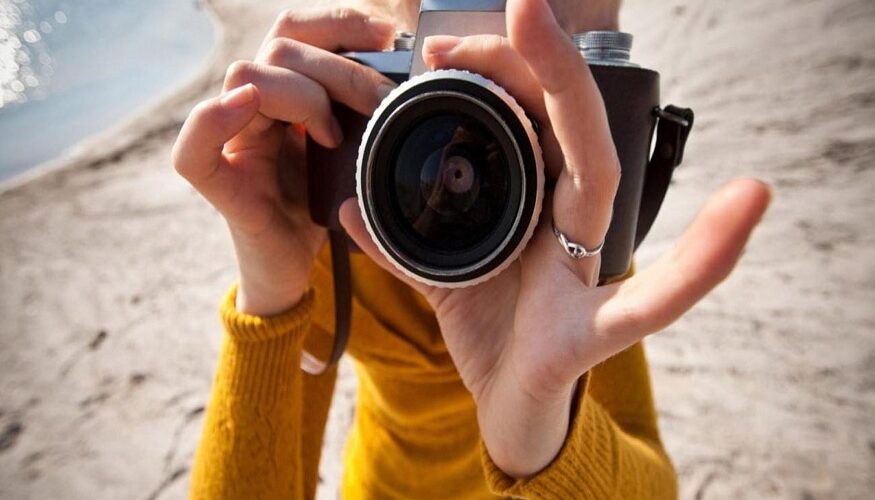General News Blog
My WordPress Blog
My WordPress Blog

Photography is an art form that requires both technical skill and creative vision. While owning a high-quality camera is a good start, it’s the photographer’s ability to control the camera’s settings and composition that makes the biggest difference in the final result. In this article, we’ll explore some essential photography techniques and provide expert tips to help you capture stunning images.
Composition is the arrangement of visual elements in a photograph. A well-composed photo is aesthetically pleasing and draws the viewer’s attention to the subject. Here are some essential composition techniques to improve your photography:
Rule of Thirds: The rule of thirds is a fundamental principle of composition. It involves dividing the frame into thirds horizontally and vertically and placing the subject on one of the intersection points. This creates a more balanced and visually pleasing composition.
Leading Lines: Leading lines are a powerful tool to guide the viewer’s eye through the photo. They can be any lines in the scene, such as roads, buildings, or even shadows. Use leading lines to direct the viewer’s attention to the subject or create a sense of depth and movement.
Symmetry: Symmetrical compositions can be very powerful and create a sense of balance and harmony. Look for symmetrical scenes or use reflections to create symmetrical compositions.
Lighting is one of the most critical elements in photography. It can make or break a photo, depending on how it’s used. Here are some essential lighting techniques to improve your photography:
Golden Hour: The golden hour is the hour after sunrise and the hour before sunset. During this time, the light is warm and soft, creating a beautiful glow on the subject. Shooting during the golden hour can add warmth and depth to your photos.
Backlighting: Backlighting is when the light source is behind the subject, creating a halo effect. This technique can add drama and depth to your photos and make the subject stand out.
Fill Flash: Fill flash is when you use a flash to fill in the shadows created by harsh sunlight. It can be used to create a more balanced exposure and add detail to the subject’s face.
Knowing how to use your camera’s settings and functions is essential to capturing stunning photos. Here are some essential camera techniques to improve your photography:
Shutter Speed: Shutter speed refers to the amount of time the camera’s shutter is open, allowing light to enter the sensor. A faster shutter speed freezes motion, while a slower shutter speed creates motion blur. Use the appropriate shutter speed for the subject and the effect you want to achieve.
Aperture: Aperture is the size of the opening in the lens that lets light into the camera. A larger aperture (lower f-stop number) creates a shallow depth of field, blurring the background and making the subject stand out. A smaller aperture (higher f-stop number) creates a greater depth of field, keeping more of the scene in focus. Choosing high-quality e-mount Sony camera lenses can greatly impact aperture control and image quality, ensuring sharp and vibrant photos.
ISO: ISO refers to the camera’s sensitivity to light. A higher ISO allows you to shoot in low-light situations, but it also creates more noise in the image. Use the appropriate ISO for the lighting conditions and the effect you want to achieve.
Post-processing is the process of editing and enhancing your photos after they’re taken. It can help you correct mistakes and improve the overall quality of your photos. Here are some essential post-processing techniques to improve your photography:
Crop: Cropping is the process of removing unwanted parts of the image to create a better composition. Use cropping to remove distractions or create a more balanced composition.
White Balance: White balance refers to the color temperature of the image. Different lighting conditions can create a warm (orange) or cool (blue) cast on the photo. Adjust the white balance to make the colors look more natural and accurate.
Contrast: Contrast refers to the difference between the lightest and darkest parts of the image. Adjusting the contrast can make the photo look more vibrant and dramatic.
Saturation: Saturation refers to the intensity of the colors in the image. Adjusting the saturation can make the colors look more vivid or more muted.
No amount of reading or studying can replace the benefits of practice. The more you practice, the better you’ll become at using different techniques and applying them creatively. Here are some tips to help you practice:
Shoot every day: Make it a habit to take at least one photo every day, even if it’s just with your smartphone.
Experiment with different settings: Don’t be afraid to try different settings and techniques to see what works best for your subject.
Study other photographers’ work: Study the work of other photographers and try to understand what makes their photos stand out.
Take a photography course: Consider taking a photography course to learn new techniques and get feedback on your work.
In conclusion, mastering photography techniques takes time, practice, and experimentation. By using these essential techniques and tips, you can take your photography skills to the next level and capture stunning images. Remember to focus on composition, lighting, camera settings, and post-processing to create the best possible images. With practice, patience, and a willingness to learn, you can become an expert photographer and capture the beauty of the world around you.